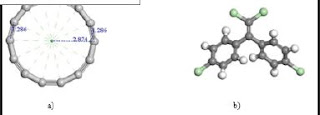Biomedical Science and Research Journals | Pharmaceutical Residues in the Aquatic Environment: Recent Studies in Estonia
Pharmaceutical Residues in the Aquatic Environment: Recent Studies in Estonia Introduction Ecotoxicological impacts of pharmaceuticals in the environment were first paid attention to in the 1990-ies, when a massive death of the bird species Gyps africanus or white-backed vulture occurred in Pakistan and India. This was found to be caused by accumulation of diclofenac in their kidneys. These residues originated from veterinary treatment of free-range livestock that the birds had been eating Oaks et al. [ 1 ]. There are more than 3000 different active ingredients in use for both veterinary and human medicine, including analgesics, contraceptives, antibiotics, neuroactive compounds, beta blockers, lipid regulators and their metabolites. Carlsson [ 2 ] who has assessed the ecotoxicological effects of 27 different pharmaceuticals, has assessed, that the most harmful for the environment are diclofenac, ethinylestradiol, ibuprofen, metoprolol, norethisterone,...

